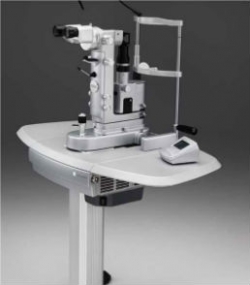Can Ellex’s 2RT Nanosecond Laser Halt the Progression of Macular Degeneration?
February 21, 2013
A new double-blind, randomized clinical trial is currently underway at the Center for Eye Research Australia (CERA) to determine whether the 2RT nanosecond laser manufactured by Ellex Medical Lasers Ltd can be utilized to slow the progression of age-related macular degeneration in patients with early stage AMD.
The laser emits a tiny pulse of energy into the back of the eye to remove the deposits that build up with age and contribute to AMD. Patients report that the treatment was completely painless.
The treatment is not suitable for people who have already developed the advanced form of AMD, either the dry or the wet form.
Click here for further details about the clinical trial and here for a CERA press release about the trial.
Comments
Jump down to form below to submit your own comments
3 Responses to “Can Ellex’s 2RT Nanosecond Laser Halt the Progression of Macular Degeneration?”
this laser is experimental and has not been shown to be of any value yet. if you want to be in the trial, get in touch with them.
I get injections of Lucentis. every 6 week’s, this is most annoying but I assume it willkeep my macular degeneration from progressing. Tell me, does this laser teatmentprovide the same care or? Willthe ellex come to america.
The ELLEX 2RT Retinal Regeneration Laser
March 23, 2009
By: Irv Arons, Ophthalmic Industry Consultant
Over the years, I have written extensively about ELLEX and its innovative ophthalmic lasers. However, in November 2007, just prior to that year’s AAO meeting, the company put out a news release about a new laser that had the potential to alleviate the early stages of age-related macular degeneration. The laser-based therapy was called ELLEX’s 2RT (Retinal Regeneration Therapy).
The theory behind the therapy was based on research conducted by Professor John Marshall at St. Thomas’ Hospital of London, and his colleague Dr. Ali Hussain. They found, after experimentation, that a Q-switched doubled YAG, (532 nm) operated at precise 3 ns pulses, could be used to trigger a renewal process of the retinal pigment epithelial cells (a sort of biostimulation) without damaging the overlying retina. This causes the RPE to migrate and release metalloproteinases, enzymes which act to clean up Bruchs membrane. The scientists were able to demonstrate and measure Bruch’s abilitly to transport water and chemicals and thus rejuvenate the retina.
For the rest of the story, please see my complete writeup in my online Journal at:
http://tinyurl.com/Ellex2RT



